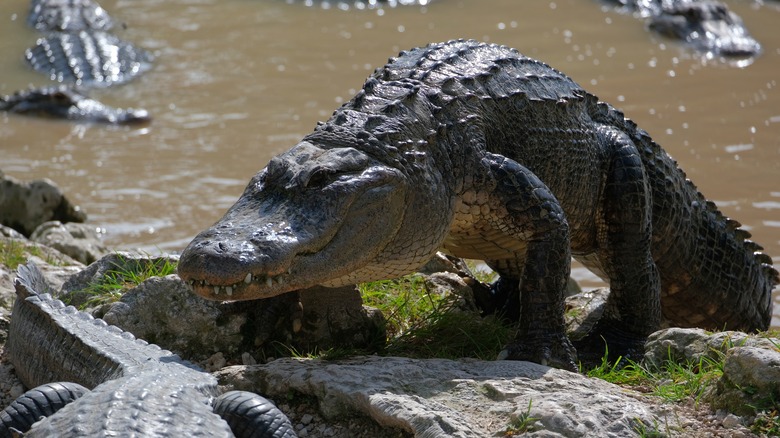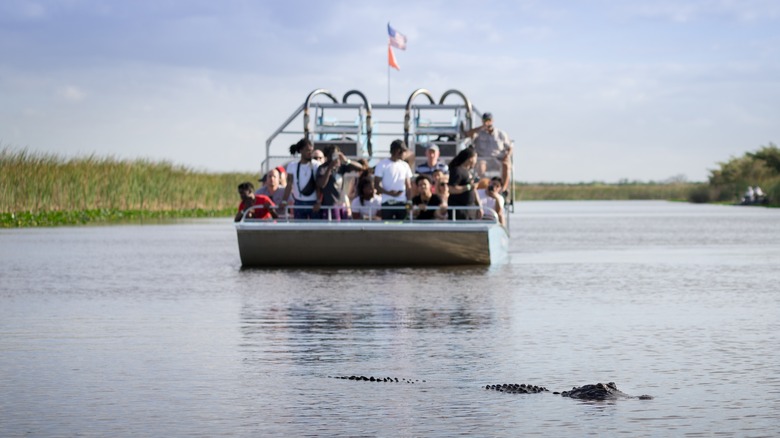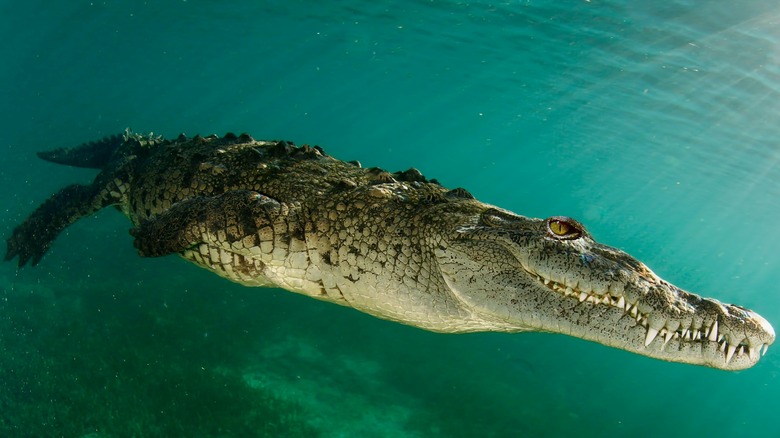You Can See Wild Alligators And Crocodiles At Only One Spot In The World
With so many similarities, you would be forgiven for using the terms alligators and crocodiles interchangeably. Though they branched apart about 80 million years ago and hail from different families, they are both fierce-looking reptiles that appear more alike than different. And, let's be real, both have a reputation for eliciting a mix of fear and excitement for wildlife spotters at Everglades National Park in South Florida — the only place in the world where you can view them both in the wild.
With 1.5 million acres of protected scenery, the Everglades is the largest subtropical wilderness in America. It serves as the idyllic home to several rare and endangered species, forever safeguarded beneath multiple designations, including a UNESCO World Heritage Site, International Biosphere Reserve, and Wetland of International Importance. When you visit this swampy paradise just south of Miami, prepare to be amazed by the abundance of wildlife a few yards, if not a few feet, right in front of you.
How to see the reptiles in the Everglades
Once you've had your fill of relaxing Florida beaches and secret islands of the Sunshine State, the raw wilderness will add some excitement to your getaway. With around 200,000 alligators inside the Everglades National Park reserve, you'll have an excellent chance of seeing scores of reptiles without too much effort. The closest park entrance from Miami is Shark Valley Visitor Center, about an hour west of the city. Another popular entry point is the Ernest F. Coe Visitor Center about an hour and a half south. The Anhinga Trail offers a $30 self-guided trek, which is less than a mile long and drops you right in the center of the action.
Crocodiles, on the other hand, are far more elusive in the Everglades. Since they nearly went extinct in 1975, their population has rebounded to about 2,000 total in all of South Florida. You'll have the best chance of spotting them on a boat tour, such as the popular airboat rides through the swamps, which range in price from $47 to $363. Look for a sneaky snout resting just above the water, especially near coastal zones. While you're there, keep your eyes peeled for the other species that call the area home, like turtles, egrets, herons, colorful butterflies, and insects.
How to tell alligators and crocodiles apart
As a guest inside their native habitat, it's worth learning about the differences between American alligators and crocodiles. Their facial features, size, and color provide the best clues from a safe distance away (their jaws are also different, but let's hope you don't get that close). Alligators have a broad, U-shaped snout, a smaller overall body size (13-15 feet), and gray or black scales. Crocodiles have a more narrow, V-shaped snout, a larger body size (up to 20 feet), and a dark green or tan color.
Of the two species, alligators are more common in the Everglades and less aggressive than crocodiles. Outside the park, you can find alligators thriving in freshwater areas of Texas, Louisiana, North Carolina, and other parts of South Florida. Crocodiles prefer saltwater or brackish habitats and hang around coastal regions of South Florida, Mexico, the Caribbean, Central America and northern South America in addition to the coastal regions of Africa, Madagascar, India, Sri Lanka and Australia. The Everglades is the only place in the world where you'll find both of these apex predators.
If you see an alligator or crocodile basking in the sun — a preferred activity to warm up its body temperature — do not approach the animal. Stay 15 to 20 feet away and resist the temptation to feed them. The last thing park rangers want is for reptiles to associate humans with tasty treats. That way, you'll be able to officially say you braved a giant reptile in the magic of Florida and lived to tell the tale.


